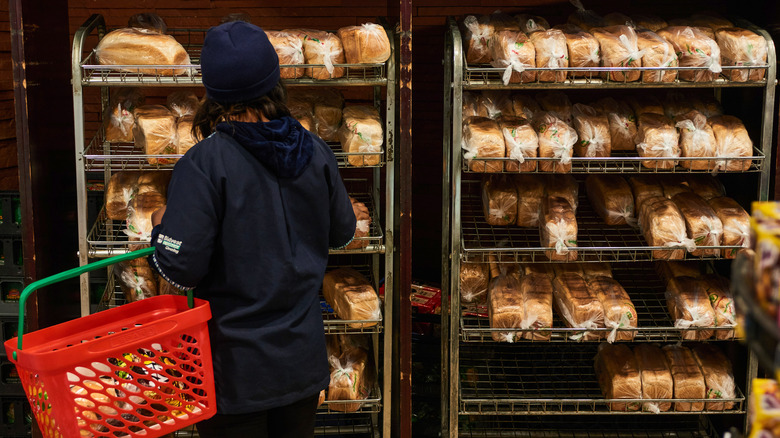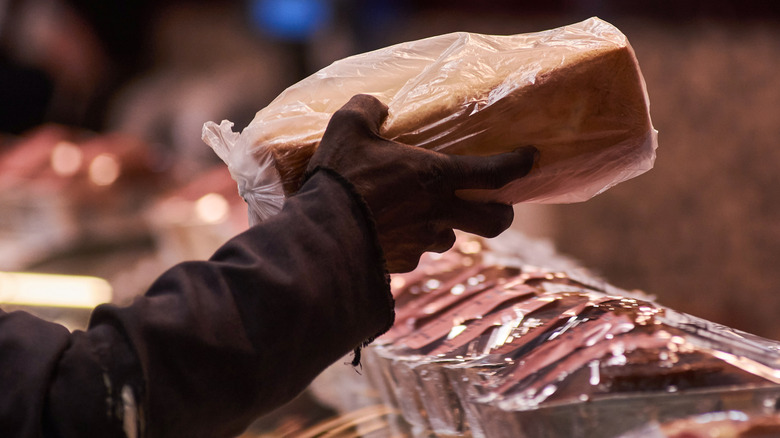The Scientific Reason Store-Bought Sliced Bread Lasts So Long
The world is full of small injustices. If you've ever wondered why the homemade bread you painstakingly crafted needs to be eaten within three days, but the bland store-bought loaf you spent $3 on lasts for a week or even longer, you aren't alone. What gives?
To answer this question, it's helpful to take a backward glance at glutinous (not gluttonous) genealogy. The year was 1962, and bread scientists at the British Baking Industries Research Association in the English village of Chorleywood had just invented a new method for making bread last longer. The scientists discovered that a high-speed mixing process, aptly named the Chorleywood Baking Process (CBP), could fundamentally modify the protein structure of the dough so that it could stretch and retain gas during a quick yeast fermentation. Enter industrial bread. It was a huge stride in accessibility, as foodies who once couldn't afford a daily loaf or find enough time to bake bread from scratch could now eat it every day. But, mass production affected taste and came at the cost of eating quality food. Additives and dough conditioners entered the scene to increase shelf life even further, and the commercially inefficient long-fermentation process largely went out the window.
Our daily store-bought bread is only possible because of a little outside help
In an interview with YouTube foodie channel All Hail Kale, Cornell University history professor Steven Kaplan agrees with the interviewer that the Chorleywood method induced "something of a travesty to our taste buds." For as airy, fluffy, and white as industrial baking has made bread, argues Kaplan, it comes without "relationship to any sensorial ambition. Taste never mattered for Chorleywood — what mattered was cost and quantity. It was a productivist vision to make bread available every day, cheaply ... and I think today most supermarket bread remains like that."
The aforementioned dough conditioners responsible for the plush dimensionality of store-bought bread include enzymes, emulsifiers, and oxidizing agents, all of which create consistent yeast-leavened bakery products on a day-to-day basis.
Spore-forming bacteria typically crops up post-baking, so to increase shelf life and strengthen resistance to microbiological contamination, it isn't uncommon for commercial bread to be loaded with synthetic antimicrobials (stabilizers and preservatives) including but not limited to butylated hydroxy anisole, tertiary butyl hydroxy quinone, calcium propionate, sodium benzoate, potassium sorbate, and sorbic acid (for preserved white color). Industrial bread-making also forces air into the loaves via extremely vigorous mechanical mixing using an enclosed high-speed mixer.
Still, without these questionable food additives, bread has a shelf life of just three to four days. To keep bread the daily food staple that it is, foodies must either relent or roll up their sleeves to bake a fresh loaf multiple times per week.

